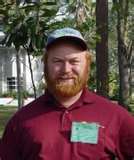When your area of expertise includes tree preservation, and you have been doing just that for 45 years, a pattern of anticipation emerges from the owner of the tree as it relates to certain inquiries regarding the process and expectations. Wither my client is commercial or residential there are shared common denominators associated with each person. Here is my summation of the most frequently asked questions and my response:
1. What is the Difference Between a Commercial Tree and a Homeowner Tree? The owner, tree preservation is not about tees, it's about people and trees. Typically, a commercial client is motivated to save trees due to ordinances. The cost associated with mitigating tree removal to make room for a project is weighed against the preservation costs. Whichever is lower, wins. With a homeowner however the driving force for preservation is emotion. Trees are an emotional component of the landscape. Cost is certainly a consideration but secondary.
2. Does it Cost More to Save a Residential Tree Than a Commercial Tree? Yes, but not significantly more. If you have ever seen a construction site there is little need to be careful not to mess things up. A home setting however is typically a finished landscape environment where great care must be taken as to avoid any collateral damage to improvements.
3. What Are the Most Important Components of Successful Tree Preservation? If the tree is to be preserved prior to construction of a project there are three (3) basic components to success: 1. Save trees in groups, if that is not possible then, 2. Space, and if that is not possible, 3. Time. It has been demonstrated that trees survive better when saved in groups. Space is defined as the set-back distance from the subject tree to the interface of construction impacts. Time is the actual passing of weeks, months, or more to insure that the preservation tactics work before construction begins. On the other hand, if the subject tree is located in a finished environment the aforementioned rules may apply to which are added: Water; water is of course a necessary component of any preservation attempt. Early Detection; just as with us humans, the sooner we know that there is a problem the better the chances of successful intervention. Typically, by the time a home owner notices that something is wrong, the tree is too far gone for successful intervention. Accurate Diagnostics; the arborist must know tree biology and how and why trees live, decline, and die before any type of treatment protocol is brought to bear. The treatment of insects on a tree instead of treating them as a by-product of a much greater problem is a classic example of unprofessional diagnostics. Putting new tires on a car that really needs an alignment may be an accurate simile. First the alignment, then the new tires; first fix the stress or reason for decline, then treat for the insects
4. Can My Tree Be Saved? Not all trees can be saved and not all trees should be saved. The first and foremost consideration in tree preservation is SAFETY. In the after situation of preservation will the subject tree be safe? Are there targets of people or property located within the failure footprint? Does the tree look great but the limbs are dying? Have there been previous failures? Is the subject tree structurally sound? You will need the services of a qualified arborist to make these determinations. I have spent many a day in deposition and court and full well know the unbelievable heartache of a child or others killed or seriously injured by a fallen tree or parts of a tree. SAFETY FIRST- IT'S YOUR DUTY UNDER THE LAW.
5. How Much Money Will This Cost? That depends. My sainted mother once told me never to discuss money with anyone that makes more than me or less than me. Money is a relevant thing. What is expensive to one person may be quite reasonable to another. This much is certain: You will first need a set of tree preservation specifications for all arborists who will be bidding on the job; otherwise, every arborist will have his/her opinion as to treatment methodology and your bids will be all over the place. Do your homework! No one will do it for you. Locate both the arboreal consultant who will write the preservation specs, and the practicing arborist who will actually implement the specs. You can't get to where you are going until you know where you are. Investigate. Research. Repeat.
6. Can I Get My Money Back if the Tree Dies? I (and other tree consultants that I know) all offer the exact same guarantee that my doctor offers when it comes to successful surgical outcomes or diagnostic testing results. "OK Doc, I'll pay your for the surgery provided it works out successfully", or, "OK Doc, do the testing but remember I'm only going to pay you if the results are good". We are dealing with a living entity here folks; too many variables for which there are no controls...or guarantees. Make certain that the tree consultant and the arborist who will do the work are well established in the community with years of service and establishment. Are they licensed? Insured? Confirm before the work begins- afterwards is too late. Are they members of a professional group? Look at their website for any Awards or Honors they may have received. Ask for a CV or resume- the consultant for certain will have one; if not, reconsider your choice of consultants. What high profile jobs have they done in their careers? What homeowners?
7. What are the Most Important Disciplines Considered When Preserving a Tree? Math and Biology: Math because almost all preservation specs depend on accurate formulas for treatments. Biology because one must understand how a tree lives, declines, and dies in order to preserve it. As an example in math, did you realize that for every square foot of canopy area a tree needs approximately one to two cubic yards of soil to grow? Did you realize that in central Florida a four inch tree needs about three gallons of water per caliper inch per day to establish and become vigorous? Are you aware of the formula that would convert three pounds of wettable powder into liquid ounces? Do you know the formula of how much of a particular nutrient it takes to get from the value of two parts per million to three parts per million? Does the company you are considering to do the work believe in any of the following urban legends: Taking off foliage from the top of the tree will compensate for root loss; applying pruning paint to pruning cuts indiscriminately without specific reasons for doing so; using vitamins, humic acids, booster shots, or elixirs to improve a sick tree; indiscriminately fertilizing a "sick tree" without benefit of tissue testing. These are just a short list of myths that those who do not keep up with research believe to be true when in fact they are not.
8. How Long a Period of Time Before I See Results? Depends on what was causing the problem. If the problem was/is a general malaise then anywhere from ninety days to a year or more (depending on many variables including species to the time of year the tree was treated). A nutrient declining tree may respond within a couple of months to an entire growing season or more, depending on the deficient nutrient and soil pH among other criteria.
Joe Samnik, is an Arborist Certified by the International Society of Arboriculture. Mr. Samnik has over 46 years of practice encompassing tree issues, arboreal and horticultural consulting, dispute resolution, tree and plant appraisals and expert witness in tree and landscape issues.
©Copyright - All Rights Reserved
DO NOT REPRODUCE WITHOUT WRITTEN PERMISSION BY AUTHOR.










